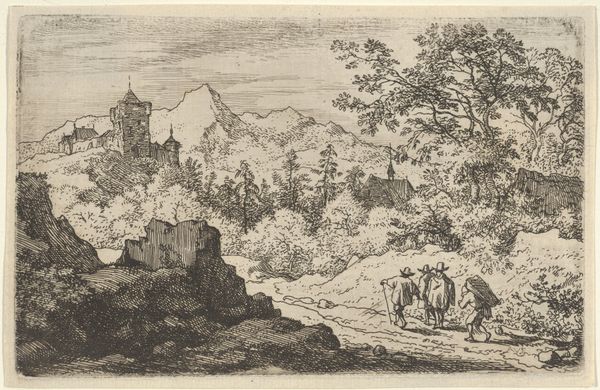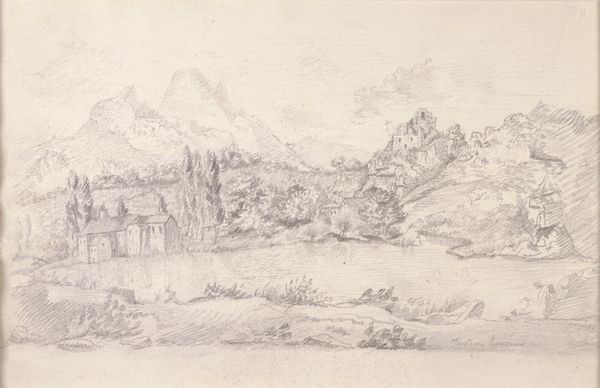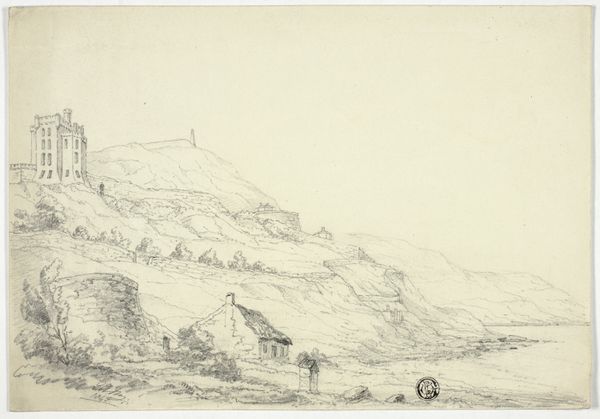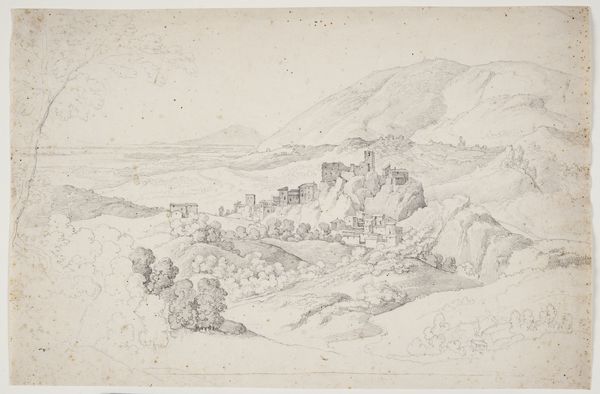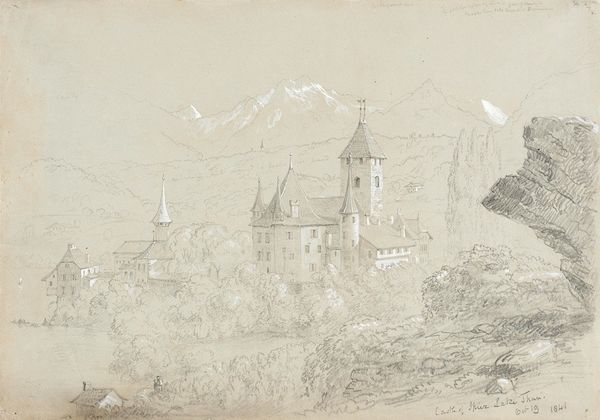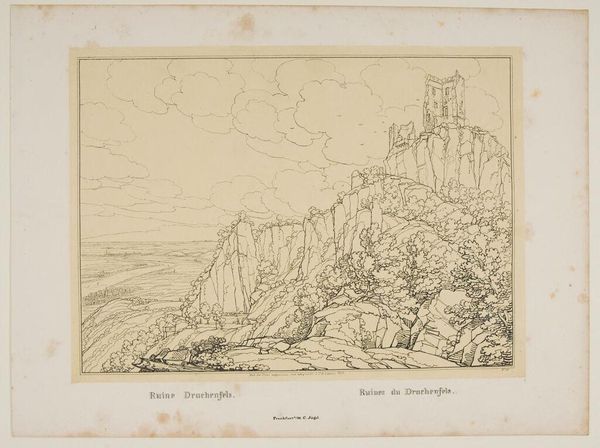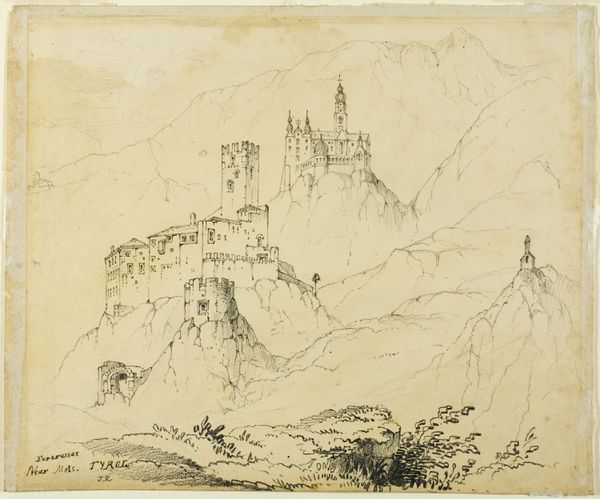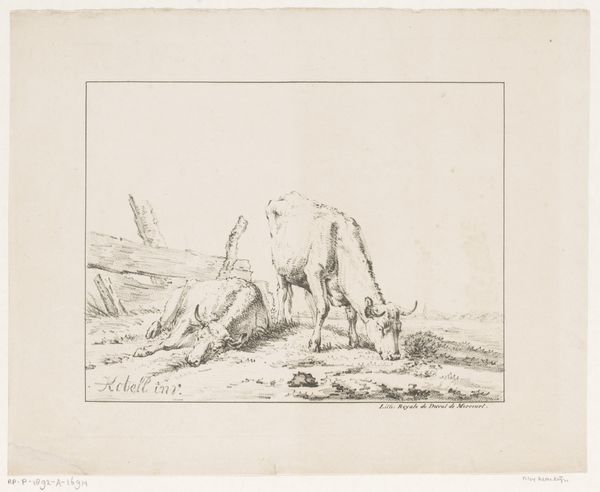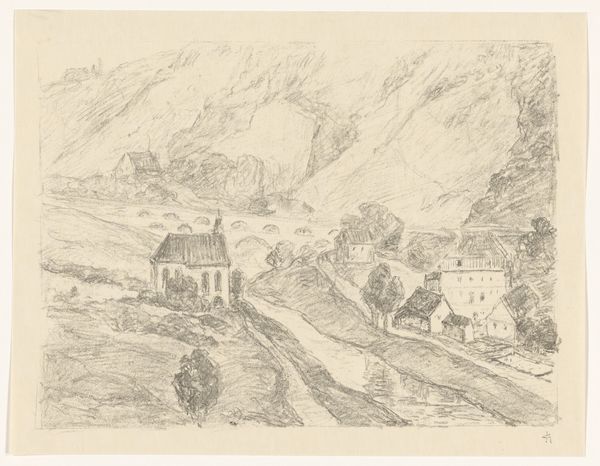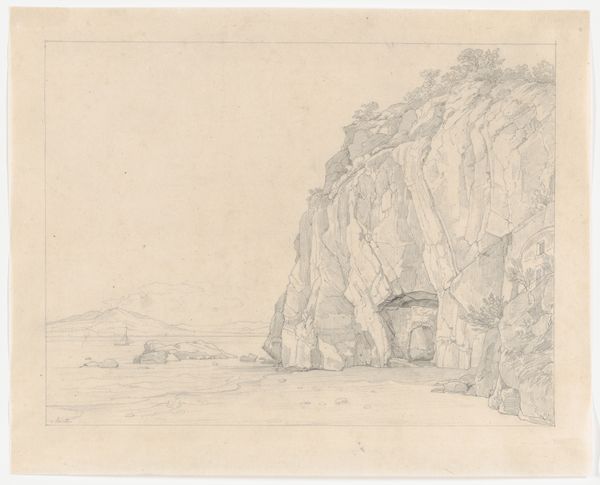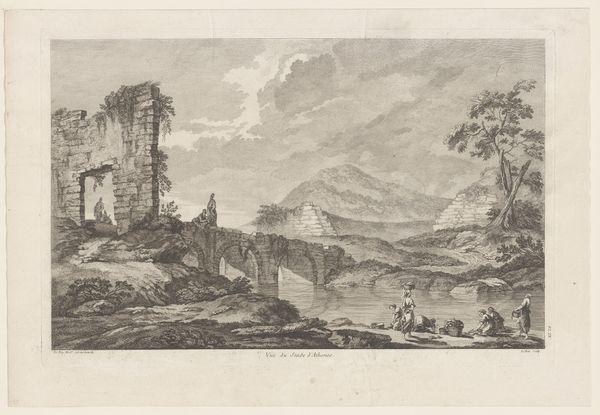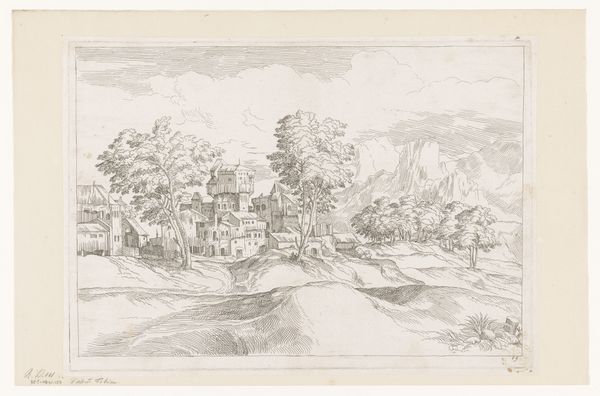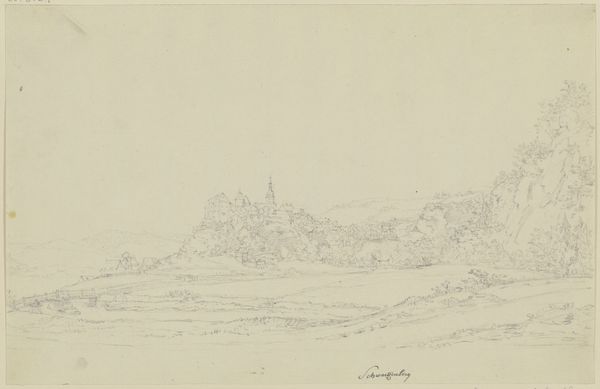
drawing, print, etching, engraving
#
drawing
# print
#
etching
#
landscape
#
romanticism
#
engraving
Dimensions: plate: 7 11/16 x 11 1/8 in. sheet: 11 5/8 x 15 5/8 in.
Copyright: Public Domain
Editor: This is Johann Christoph Erhard's "Landscape, Mariastein in Tyrol," made sometime between 1810 and 1822, using etching and engraving techniques. It has a strikingly calm feel for a Romantic landscape, and I’m fascinated by the contrast between the massive rock formations and the tiny figures down below. How do you interpret this work, especially within the context of its time? Curator: That's a great observation. It's crucial to remember how landscape imagery, like this one, played a significant role in shaping national identity in the early 19th century. The imposing architecture juxtaposed against the grandeur of nature isn’t just picturesque; it's a visual claim to cultural and political authority. Where do you think this etching was meant to be displayed and for whose gaze? Editor: Well, given that it’s a print, I'd imagine it was intended for a broader audience, not just wealthy patrons, maybe even for educational purposes, to inspire a sense of national pride or promote tourism? Curator: Precisely. These kinds of prints democratized access to powerful imagery. The sublime landscape became a commodity, circulating ideas about nationhood and belonging. Erhard is carefully constructing a vision of Tyrol that resonates with Romantic ideals, but also subtly reinforces specific socio-political structures. Notice the prominent position of the built structures – what message do you think this composition tries to convey to the masses? Editor: I see what you mean. The architecture, perched high and dominating the natural world, suggests a controlled and ordered society, using Romanticism to communicate about power and governance, as well as creating a beautiful scene. Curator: Exactly. It demonstrates how art, even seemingly pastoral landscapes, are always embedded in social and political discourse. This understanding pushes us to question what stories these images are really telling. Editor: This makes me rethink the visual messaging of these early landscape scenes. Thanks for the clarification! Curator: It highlights the necessity of delving deeper to uncover the multifaceted relationship of the art with cultural, social, and historical events that shape not just production, but public engagement with the work.
Comments
No comments
Be the first to comment and join the conversation on the ultimate creative platform.
